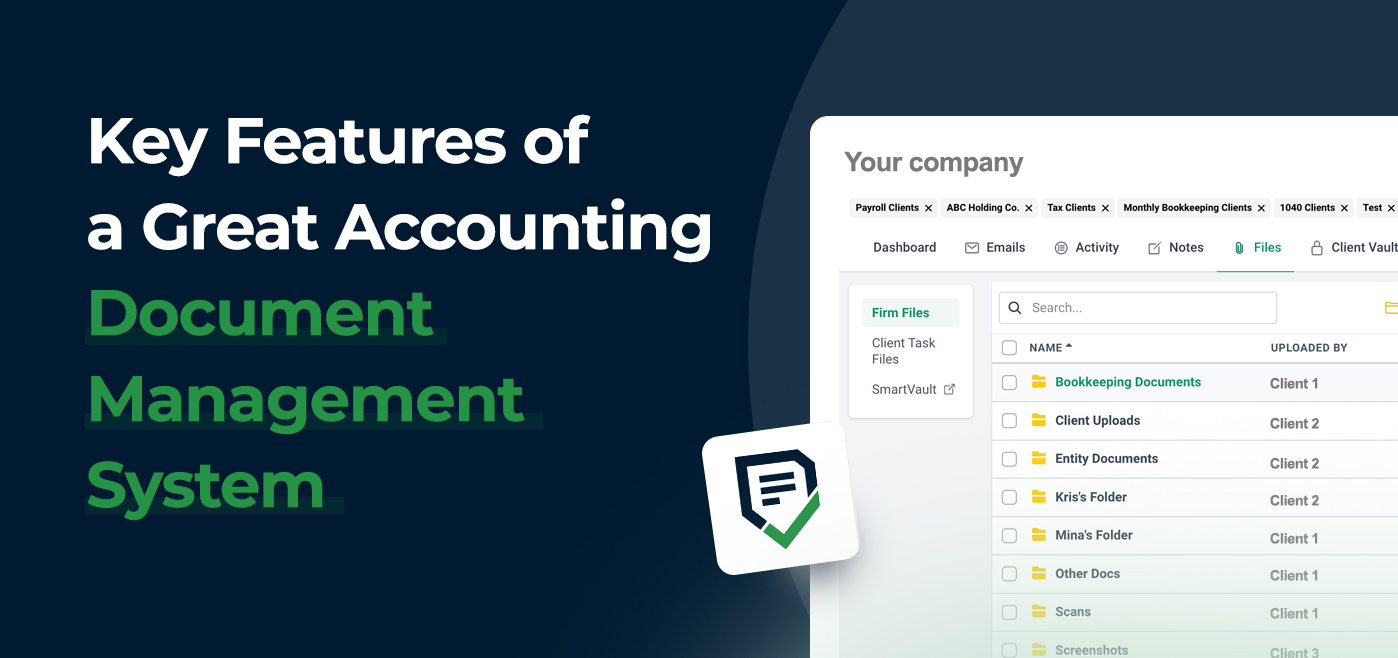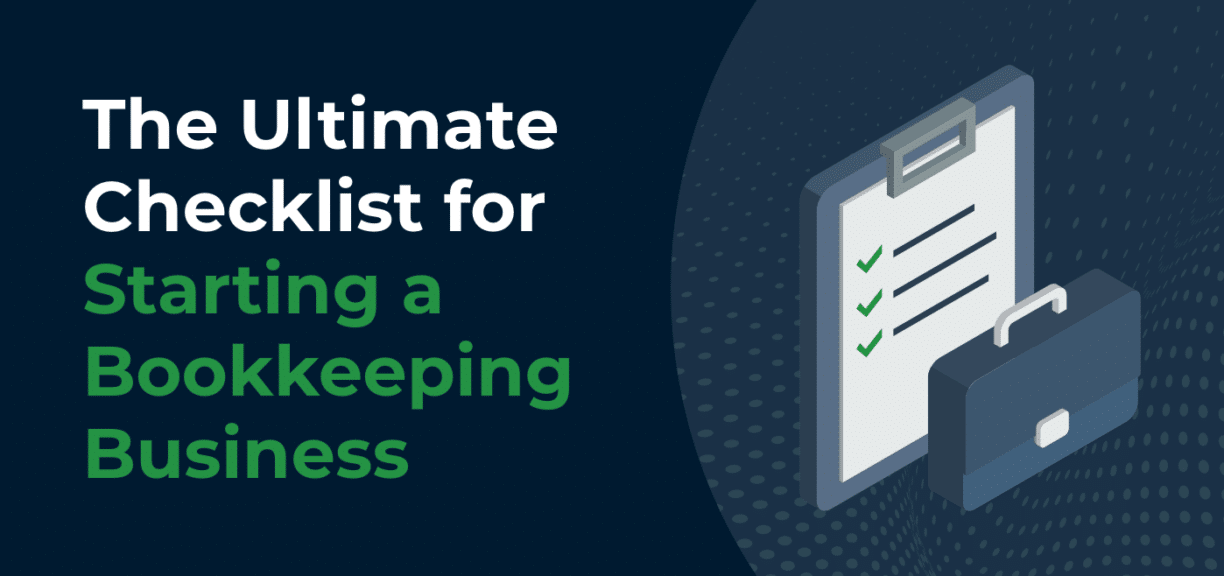The Ultimate Checklist for Starting a Bookkeeping Business
Author: Financial Cents
In this article
Over the years the demand for bookkeeping services has witnessed a steady increase. In 2022, the Bookkeeping services industry was estimated to be worth about $65 billion, with an annual growth of 2% between 2017 to 2022. Businesses will always have a need for bookkeeping services.
Bookkeeping is a fundamental component of any successful business, and as long as commerce exists, there will be a demand for skilled bookkeepers.
If you’re passionate about numbers, detail-oriented, and looking to take control of your career. Starting a bookkeeping business might be the perfect entrepreneurial journey for you. You can start a bookkeeping business with minimal capital from your home or manage it with your current job (if you are employed) and scale from there.
We’ve created this ultimate checklist to assist you with starting a bookkeeping business from start to finish.
Checklist for Starting a Bookkeeping Business
Step 1: Idealize Your Brand
Your brand is more than just a name and a logo; it’s the essence of your business. Take the time to envision what you want your bookkeeping business to represent.
Checklist for idealizing your brand:
| Task | Person Responsible | Target date to complete | Actual Date completed | Comments |
| Choose a business name | ||||
| Create mission and value statement | ||||
| Define your target audience | ||||
| Identify your Unique Selling Proposition (USP) | ||||
| Outsource logo and branding |
Your brand will be the face of your bookkeeping firm, so make sure it reflects your values and appeals to your target market.
When idealizing your brand, consider how you want your clients to perceive you. Do you want to be seen as a reliable, traditional bookkeeper, or a cutting-edge tech-savvy one? The answers to these questions will help shape your brand identity.
Step 2: Create a Business Plan
A well-structured business plan is essential for the success of your bookkeeping business. It serves as a roadmap for your business and helps you secure financing, set goals, and make informed decisions.
Checklist for creating a business plan:
| Task | Person Responsible | Target date to complete | Actual Date completed | Comments |
| Write an executive summary. | ||||
| Perform market analysis | ||||
| Create a detailed description of the services you’ll offer | ||||
| Make financial projections | ||||
| Create marketing and sales strategy | ||||
| Outline your operational plan | ||||
| Research on legal and regulatory compliance. |
A robust business plan not only helps you clarify your vision but also serves as a valuable tool when seeking financing or attracting potential investors.
Step 3: Take Bookkeeping Certification Courses
To establish credibility and expertise, consider enrolling in bookkeeping certification courses. Certification from recognized organizations such as the American Institute of Professional Bookkeepers (AIPB) or the National Association of Certified Public Bookkeepers (NACPB) can make a significant difference when attracting clients.
Checklist for Bookkeeping Certification Courses:
| Task | Person Responsible | Target date to complete | Actual Date completed | Comments |
| Take a certification from recognized bookkeeping organizations. |
Certification courses will cover topics such as accounting principles, tax preparation, and software proficiency. They not only enhance your knowledge but also demonstrate your commitment to professionalism.
You can check out our list of 20 best free and paid bookkeeping courses.
Step 4: Choose the Structure of Your Bookkeeping Business
Decide on the legal structure of your bookkeeping business. Common options include:
- Sole Proprietorship: You’re the sole owner and operator, and you’re personally responsible for all business debts and liabilities.
- Limited Liability Company (LLC): Provides personal liability protection while allowing flexibility in management and taxation.
- S Corporation: Offers tax advantages and limited liability, but comes with more regulatory requirements.
- Partnership: If you plan to co-own the business with someone else.
Checklist for Choose Your Bookkeeping Business Structure
| Task | Person Responsible | Target date to complete | Actual Date completed | Comments |
| Choose a structure | ||||
| Consult a legal advisor (optional) | ||||
| Register your business with the selected structure. |
Each structure has its pros and cons, you may need to consult with a legal advisor to determine the best fit for your business.
Step 5: Price Your Bookkeeping Services
Pricing your services appropriately is crucial for profitability. Consider factors such as your location, experience, the complexity of the work, and the local market.
Checklist for Pricing Your Bookkeeping Services
| Task | Person Responsible | Target date to complete | Actual Date completed | Comments |
| Conduct competitive pricing research | ||||
| Choose your pricing model (hourly, flat fee or value based pricing) |
Keep in mind that pricing is not static. You can adjust your rates as your experience grows and as you add new services to your portfolio. Be transparent with clients about your pricing structure and any changes that may occur.
Learn how to Price Accounting and Bookkeeping Services For Ultimate Profitability by downloading this playbook we co-authored with Loren.
Step 6: Make a List of the Tech Stack You’ll Need
Efficiency and accuracy are extremely important in bookkeeping. Make a list of the essential software solutions and tools you’ll need to streamline your operations. Common tools include:
| Task | Person Responsible | Target date to complete | Actual Date completed | Comments |
| Select accounting software | ||||
| Select document management software | ||||
| Select communication tools | ||||
| Select data security software | ||||
| Select time tracking software | ||||
| Set up selected software |
A well-chosen tech stack can significantly improve your productivity and the quality of your bookkeeping services. Keep an eye on emerging technologies and trends in the bookkeeping industry to stay competitive.
We created a comprehensive guide to building your accounting tech stack with recommendations. You can check it out here.
Step 7: Decide on Your Funding Options
Starting a business often requires an initial investment or capital.
Checklist for picking funding options
| Task | Person Responsible | Target date to complete | Actual Date completed | Comments |
| Assess your finances. | ||||
| Decide on a funding option (personal savings, small business loans, investors or bootstrapping) |
Carefully assess your financial situation and choose the funding method that aligns with your business plan and goals. Keep in mind that securing financing is often easier when you have a well-thought-out business plan and a clear strategy for growth.
Step 8: Choose Your Office Setup (Virtual or Physical)
Decide whether you want to operate a virtual bookkeeping business, work from a physical office, or have a combination of both. Virtual bookkeeping offers flexibility and cost savings, while a physical office can provide a professional image. Consider factors like your target market and personal preferences when making this decision.
Checklist for office setup
| Task | Person Responsible | Target date to complete | Actual Date completed | Comments |
| Choose your preferred office set up (Office or virtual) | ||||
| Buy office furniture |
Consider your long-term goals and how your choice of office setup aligns with those goals. You can always start as a virtual bookkeeper and transition to a physical office as your business grows.
You can learn how to start a thriving virtual accounting firm here.
Step 9: Market Your Bookkeeping Business
Marketing is essential for attracting clients. Develop a marketing strategy.
Checklist for marketing your bookkeeping business
| Task | Person Responsible | Target date to complete | Actual Date completed | Comments |
| Search and buy your business’s website domain | ||||
| Outsource website design | ||||
| Create social media accounts | ||||
| Outsource or manage your social media. | ||||
| Print business cards | ||||
| Find industry events or local business associations for networking. | ||||
| Run or outsource online advertising | ||||
| Ask satisfied clients for referrals |
Consistency is key in marketing. Continuously update and refine your strategies based on what works best for your business. Remember that marketing is not a one-time effort but an ongoing process to keep your pipeline of clients full.
You may be interested in:
Marketing for Accountants: A detailed online and offline strategy guide.
Step 10: Streamline Client Onboarding and Retention
Efficient client onboarding is essential for a smooth start to your bookkeeping business. Develop a process for gathering client information, setting expectations, and collecting necessary documents. Additionally, consider implementing an accounting client relationship management (CRM) system to keep track of client interactions and provide excellent customer service.
Checklist template for client onboarding and retention
| Task | Person Responsible | Target date to complete | Actual Date completed | Comments |
| Create a client onboarding process. | ||||
| Choose an accounting CRM Software | ||||
| Create a retention strategy |
You can download our free accounting client onboarding checklist template to make onboarding seamless.
You may be interested in:
4 Ways Accounting Firms can Use Accounting CRM Software to Retain Clients
Starting and growing a successful bookkeeping business requires dedication, continuous learning, and adaptability. Embrace challenges as opportunities to learn and refine your skills. As you embark on your entrepreneurial journey in the bookkeeping industry, remember that success comes to those who are committed and proactive. So, take action today and turn your bookkeeping passion into a thriving business!
Manage Your Bookkeeping Business with Financial Cents
Effective bookkeeping is the backbone of any successful business, and managing a bookkeeping business requires careful planning, organization, and attention to detail. Whether you’re an established bookkeeper looking to streamline your process or a newcomer to the industry, Financial Cents accounting practice management can help you effectively manage your bookkeeping business with:
- Workflow Management: to track status of client work and deadlines.
- Automated Client Requests: to help you get documents and information from clients faster.
- Client Management (CRM): to organize all your client information in one place.
- Time tracking: To keep track of time spent on client work and bill them effectively.
- Email integration: To track all client communications and turn emails into tasks.
And more…
Instantly download this blog article as a PDF
Download free workflow templates
Get all the checklist templates you need to streamline and scale your accounting firm!
Subscribe to Newsletter
We're talking high-value articles, expert interviews, actionable guides, and events.

Key Features of a Great Accounting Document Management System
Here’s all you need to know about an accounting document management system and how it can make you more organized and save…
Apr 26, 2024

5 Simple Time-Saving Tips for Managing Uncategorized Transactions
Manually resolving multiple uncategorized transactions steals valuable time from accountants and bookkeepers. But there’s a solution. Here are five simple, time-saving tips…
Apr 24, 2024
